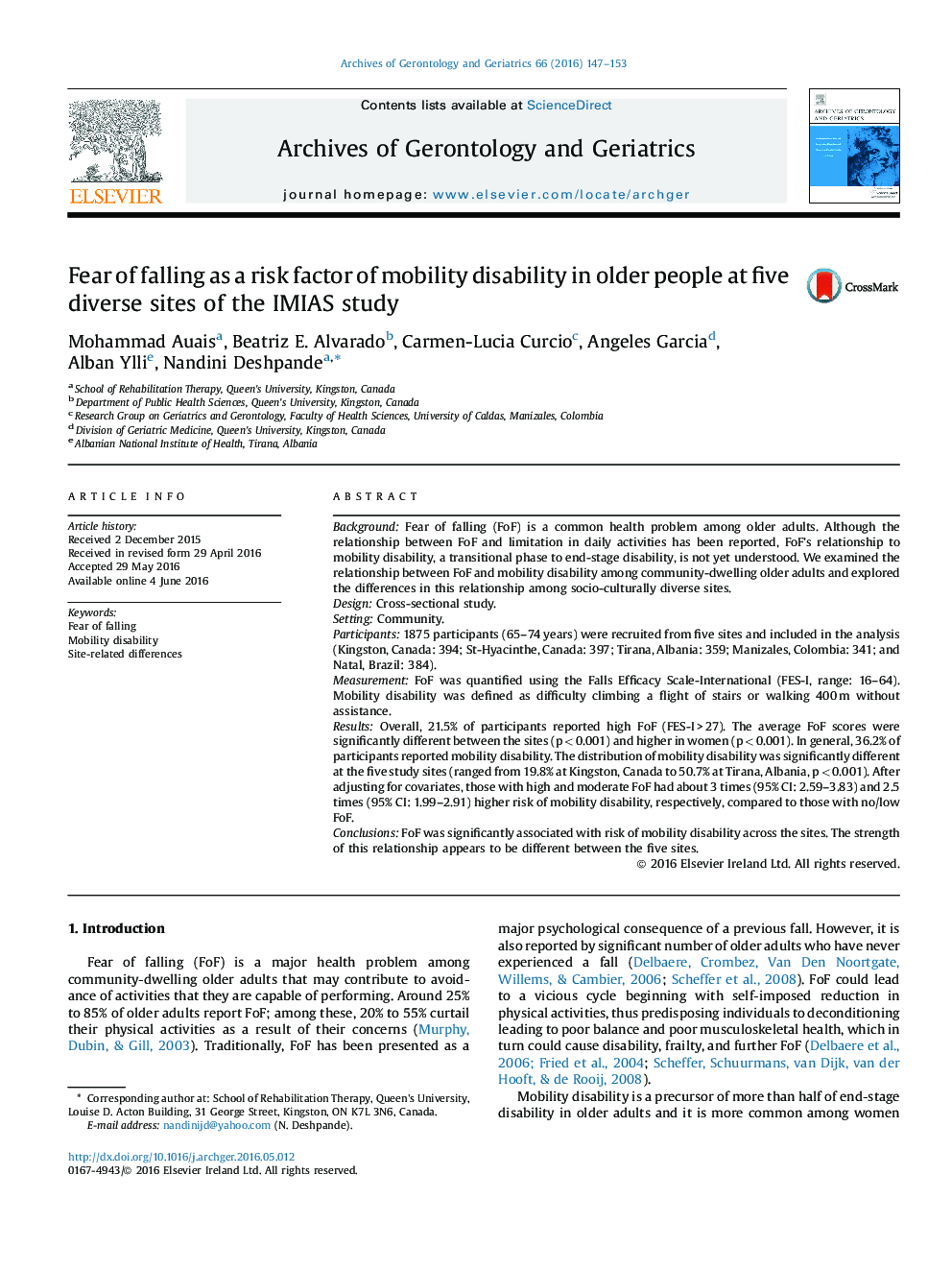| Article ID | Journal | Published Year | Pages | File Type |
|---|---|---|---|---|
| 1902652 | Archives of Gerontology and Geriatrics | 2016 | 7 Pages |
•Fear of falling was associated with mobility disability across widely diverse sites (even after accounting for potential confounders).•FoF characteristics (e.g. severity of FoF as indicated by the total score) were site-specific.•Prevention of FoF may prevent transition to disability.•Prevention of FoF starts with understanding who is at risk and how risk can be mitigated.
BackgroundFear of falling (FoF) is a common health problem among older adults. Although the relationship between FoF and limitation in daily activities has been reported, FoF’s relationship to mobility disability, a transitional phase to end-stage disability, is not yet understood. We examined the relationship between FoF and mobility disability among community-dwelling older adults and explored the differences in this relationship among socio-culturally diverse sites.DesignCross-sectional study.SettingCommunity.Participants1875 participants (65–74 years) were recruited from five sites and included in the analysis (Kingston, Canada: 394; St-Hyacinthe, Canada: 397; Tirana, Albania: 359; Manizales, Colombia: 341; and Natal, Brazil: 384).MeasurementFoF was quantified using the Falls Efficacy Scale-International (FES-I, range: 16–64). Mobility disability was defined as difficulty climbing a flight of stairs or walking 400 m without assistance.ResultsOverall, 21.5% of participants reported high FoF (FES-I > 27). The average FoF scores were significantly different between the sites (p < 0.001) and higher in women (p < 0.001). In general, 36.2% of participants reported mobility disability. The distribution of mobility disability was significantly different at the five study sites (ranged from 19.8% at Kingston, Canada to 50.7% at Tirana, Albania, p < 0.001). After adjusting for covariates, those with high and moderate FoF had about 3 times (95% CI: 2.59–3.83) and 2.5 times (95% CI: 1.99–2.91) higher risk of mobility disability, respectively, compared to those with no/low FoF.ConclusionsFoF was significantly associated with risk of mobility disability across the sites. The strength of this relationship appears to be different between the five sites.
